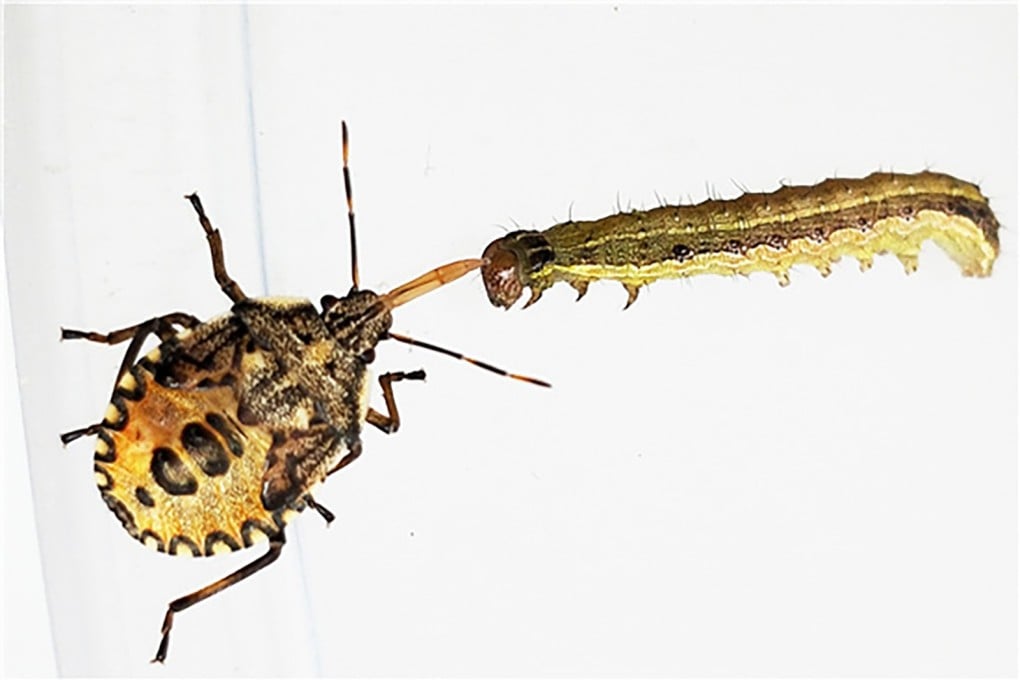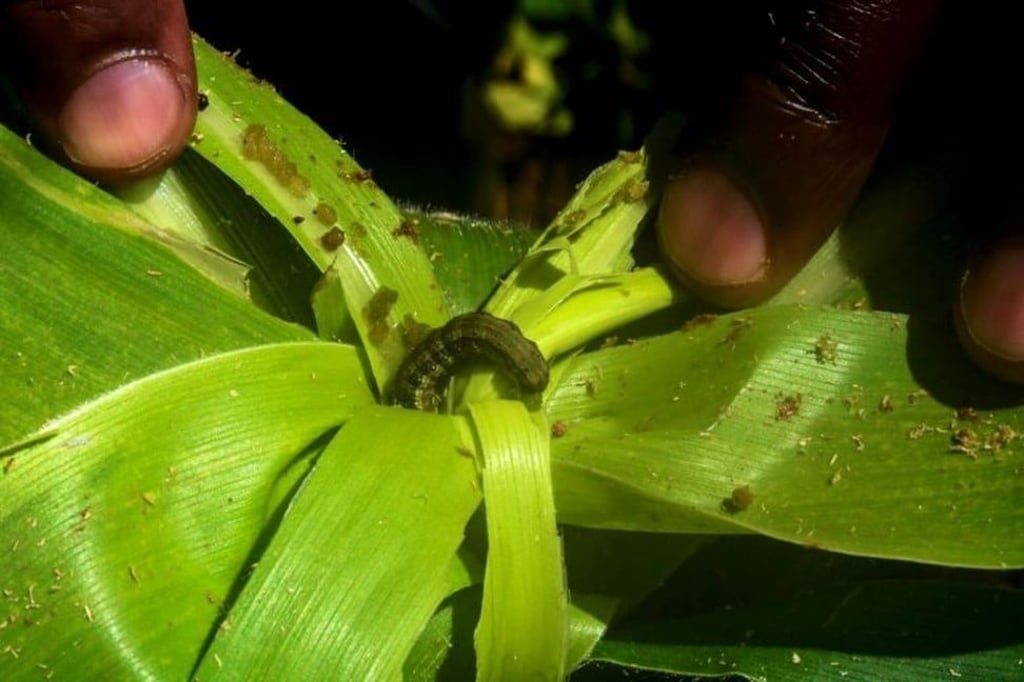Predator vs caterpillar: Stink bugs may be unleashed to stop the fall armyworms chomping their way through China’s cash crops
- The stink bug, Arma chinensis, is a natural enemy of fall armyworm
- A mature stink bug can exterminate as many as 41 fall armyworm larvae a day

Scientists in China are seeking to deploy an army of predatory stink bugs to battle a fall armyworm incursion that threatens to devastate the country’s grain crops.
The insect, Arma chinensis, is a natural enemy of fall armyworm, according to the Institute of Plant Protection of the Chinese Academy of Agricultural Sciences.
Researchers there believe it may be a useful biological agent to control the crop-ravaging caterpillar, which arrived in China early this year after spreading from the Americas to Africa and across parts of southern Asia.
The stink bug’s killing powers are impressive. A mature nymph can exterminate as many as 41 fall armyworm larvae a day by anaesthetising and paralysing the pest, and sucking out body fluid causing fatal damage to internal organs, Chinese scientists found during a field trial in the southwestern province of Yunnan.

The fall armyworm has affected crops in 18 provinces and is predicted to reach China’s corn belt in the northeast of the country this month. There’s a “high probability” that the pest will spread to the entire country’s grain-producing area in the next year, the US Department of Agriculture said on May 29.